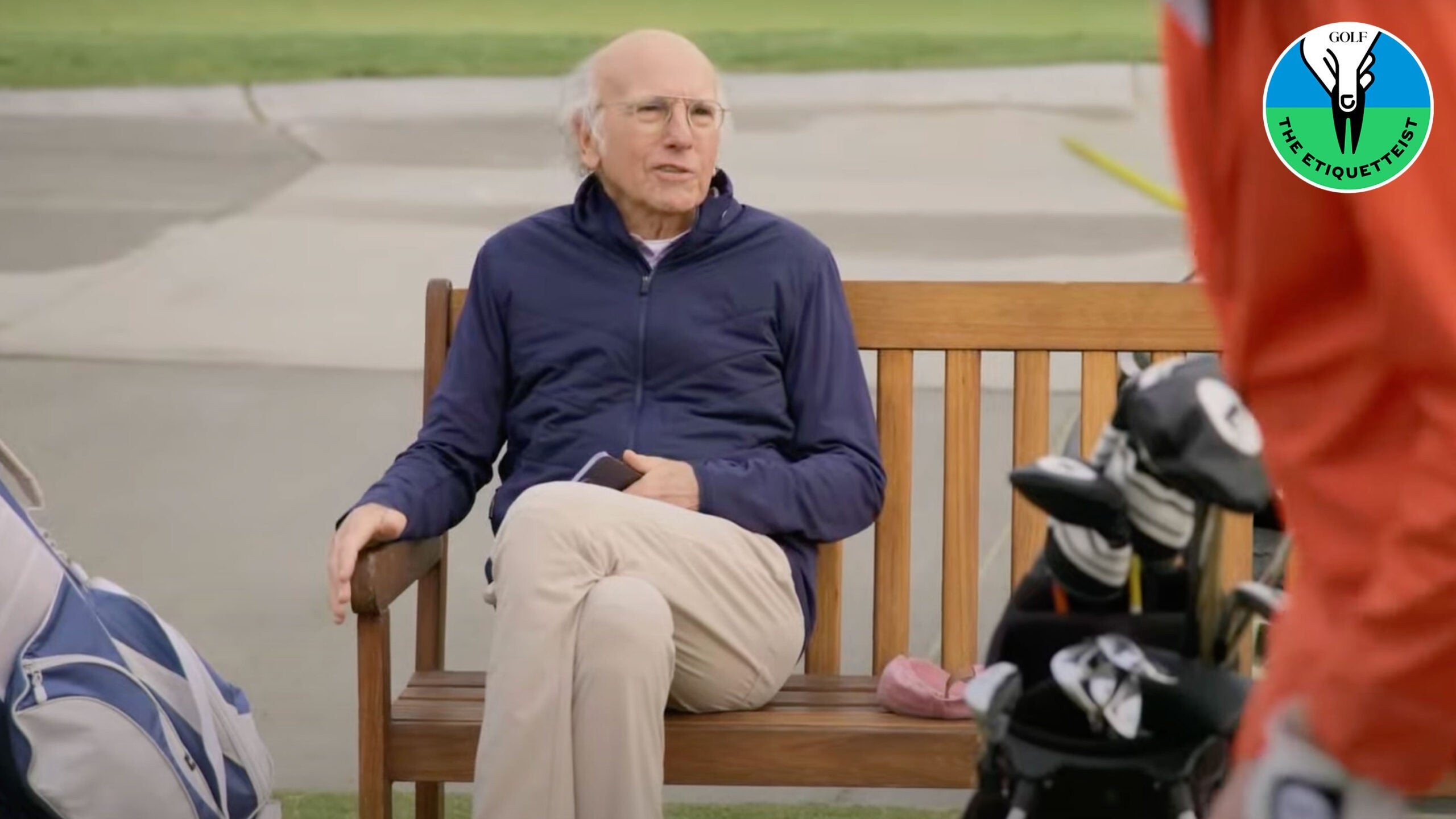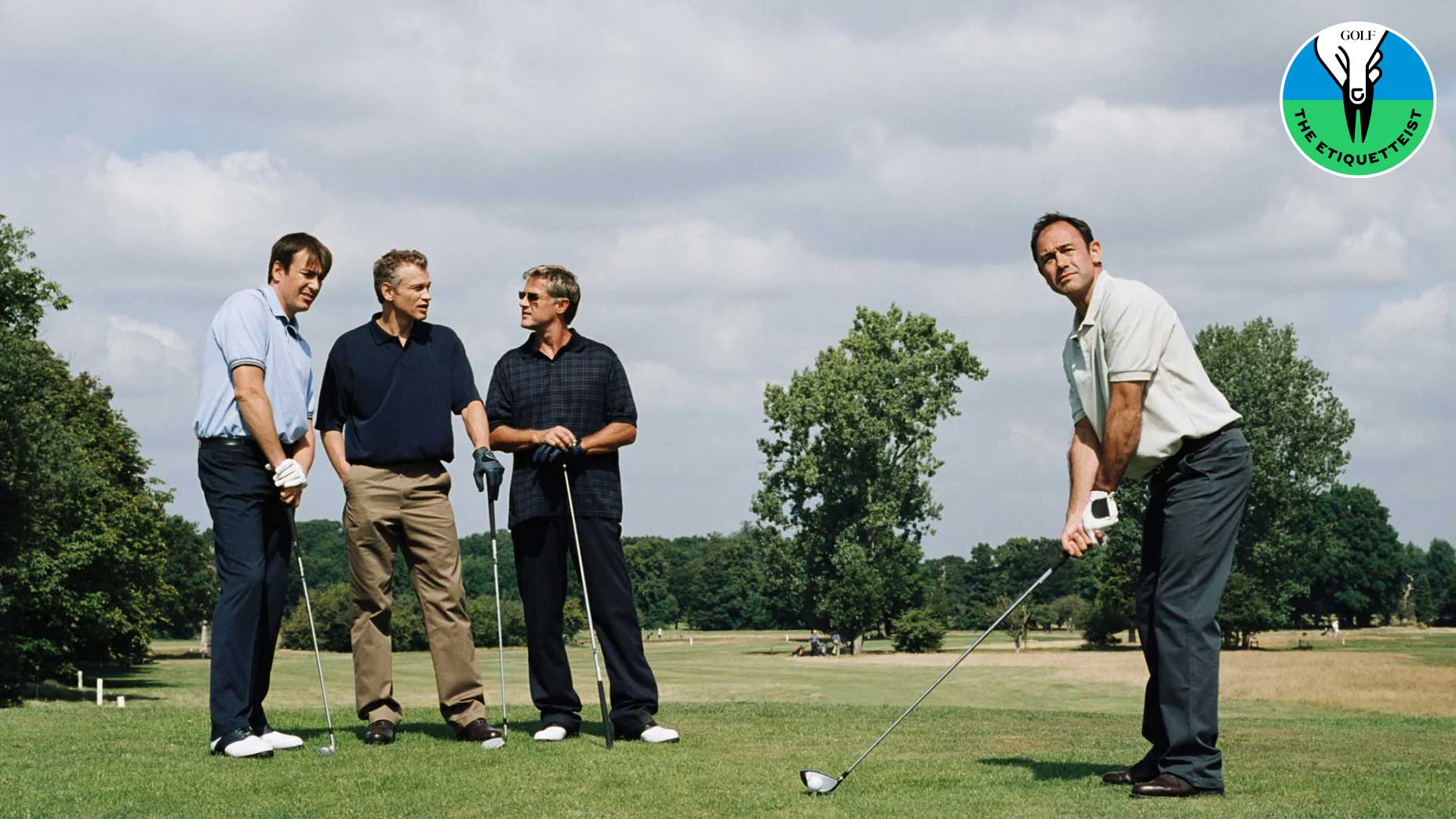Playing golf with a beginner? Here’s how to take the pressure off

Embrace the opportunity to play with a new golfer.
getty images
Ted from Wisconsin writes:
A friend who just took up the game has asked me to join him for what would be his first round on an 18-hole course. Up until now, he has only hit balls on the driving range and hacked it up on a local par-3 track. I like the guy; he’s my friend. But at this point, he still tops or whiffs a lot of shots. I’m not sure he’s ready for a real course, and I worry about our holding everybody up if we head out together. I’m not sure I want to be a part of that. Should I accept his invite or concoct an excuse for why I can’t make it?
Dear Ted:
The Etiquetteist has a friend who says he wants to launch a “Shrink the Game” campaign as a way of culling the herd of newbies who have clogged his local course since the Covid boom.
He’s joking (sort of). But his commentary gets at something real. For all the high-minded talk in golf about “growing the game,” most of us don’t like crowds, especially when we’re stuck behind them, and even less so when those crowds include players who are just learning the ropes.
It’s the golf equivalent of NIMBYism (we want more people to play, provided they aren’t in the group in front of us), and no one is more guilty of it than many of the game’s most powerful figures; if golf’s poohbahs really believed the populist messages they often spout, then places like Seminole and Pine Valley would become public-access. Now, that would make an interesting campaign.
But the Etiquetteist digresses.
To your question. You’ve probably heard it said that in golf, it’s not how, it’s how many. In fact, the opposite is true. What matters isn’t the number of strokes you take but how you go about taking them. Who cares if your friend tops every other shot? The group behind you shouldn’t, so long as your mate moves at a reasonable pace and knows to pick up when he’s taken too many whacks.
Question is, is he familiar with those elements of etiquette?
As you may be aware, in some European countries new golfers are required to pass the equivalent of a driver’s test before they’re allowed onto regulation courses. In the U.S., there is no such barrier to entry. It’s a free for all. With any luck, while learning the rudiments of grip and stance, your friend has also learned some of the etiquette basics, so he knows to be mindful of holding up others. But there’s no guarantee that anyone has introduced him to the fundamentals of how to move around a course, which — let’s face it — can be subtle and elusive. It helps to have a teacher. Or a role model, at least.
That’s where you come in. Rather than concoct an excuse to avoid playing with your friend, you should embrace the opportunity. You might start by having a conversation with him before you head to the course so you can gauge how well he understands what’s expected of him, and clarify any questions he might have. There’s no need to turn this into a confrontational or condescending exchange. Just talk it out, like two mature adults.
And when you do get to the course, you can add to the education by offering gentle guidance when it’s needed, and leading by example throughout the round. By day’s end, your friend may even come to the realization that he needs more practice on shorter courses before he takes on a full 18 again.
But the Etiquetteist has a feeling that your pal will catch on quickly.
In golf, who we learn from can make all the different. We see this all the time in junior golf programs like The First Tee and Youth on Course. Recently, none other than Tom Watson launched a program that pairs beginners with on-course mentors as a way to offer the sort of guidance all new golfers need.
That’s just the sort of aid you can give your friend. In doing so, you won’t just ensure that he doesn’t bother people playing behind him; you’ll help him have more fun as well. It’s tough to learn this game — not just the swing but the etiquette around it. And it’s more enjoyable when we all know what we’re doing.
What you’re doing is a favor to your friend. Someday, that friend may do the same for another golfer who is just starting out. Call it patience and generosity.
Pass it on.











